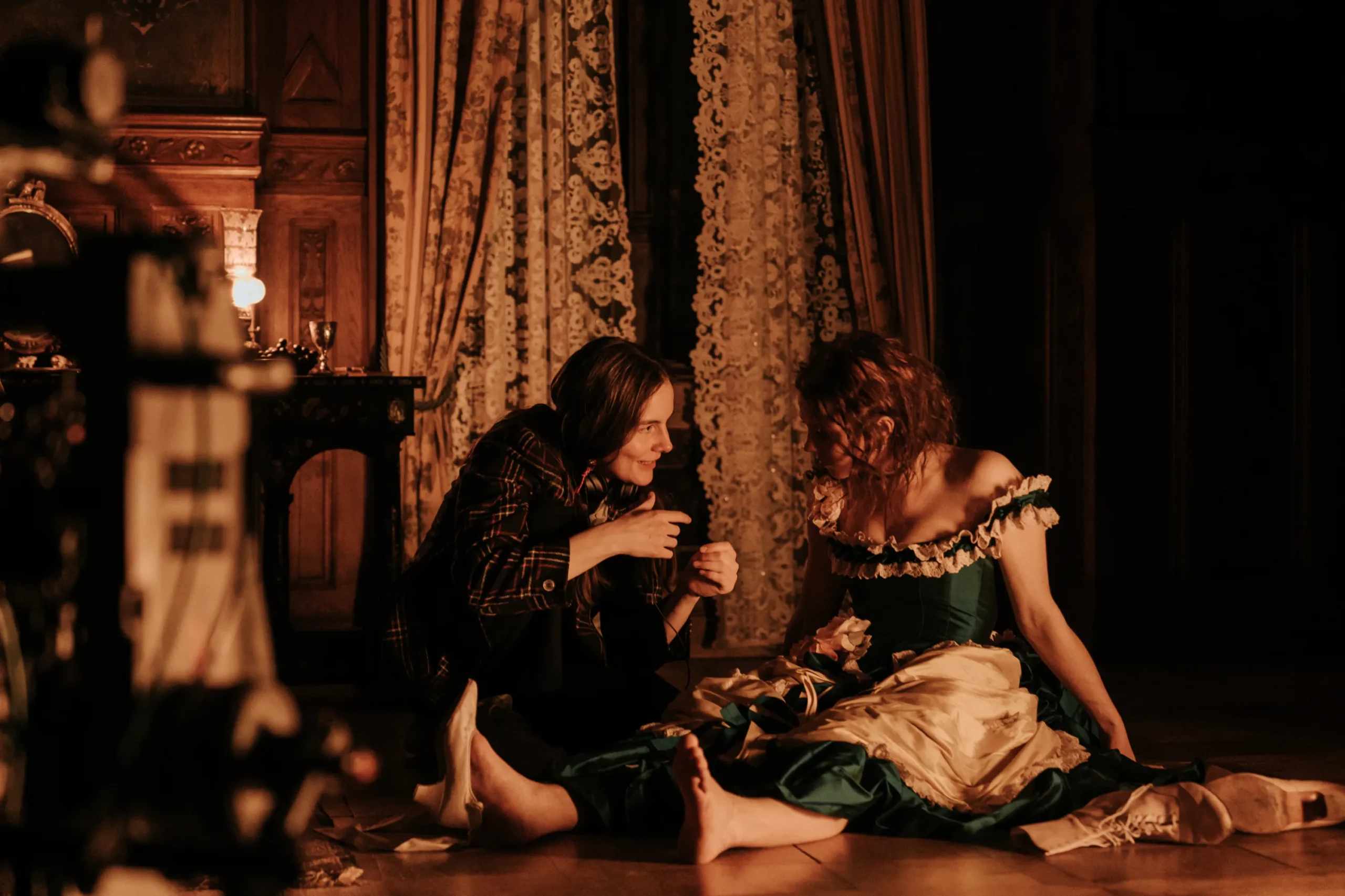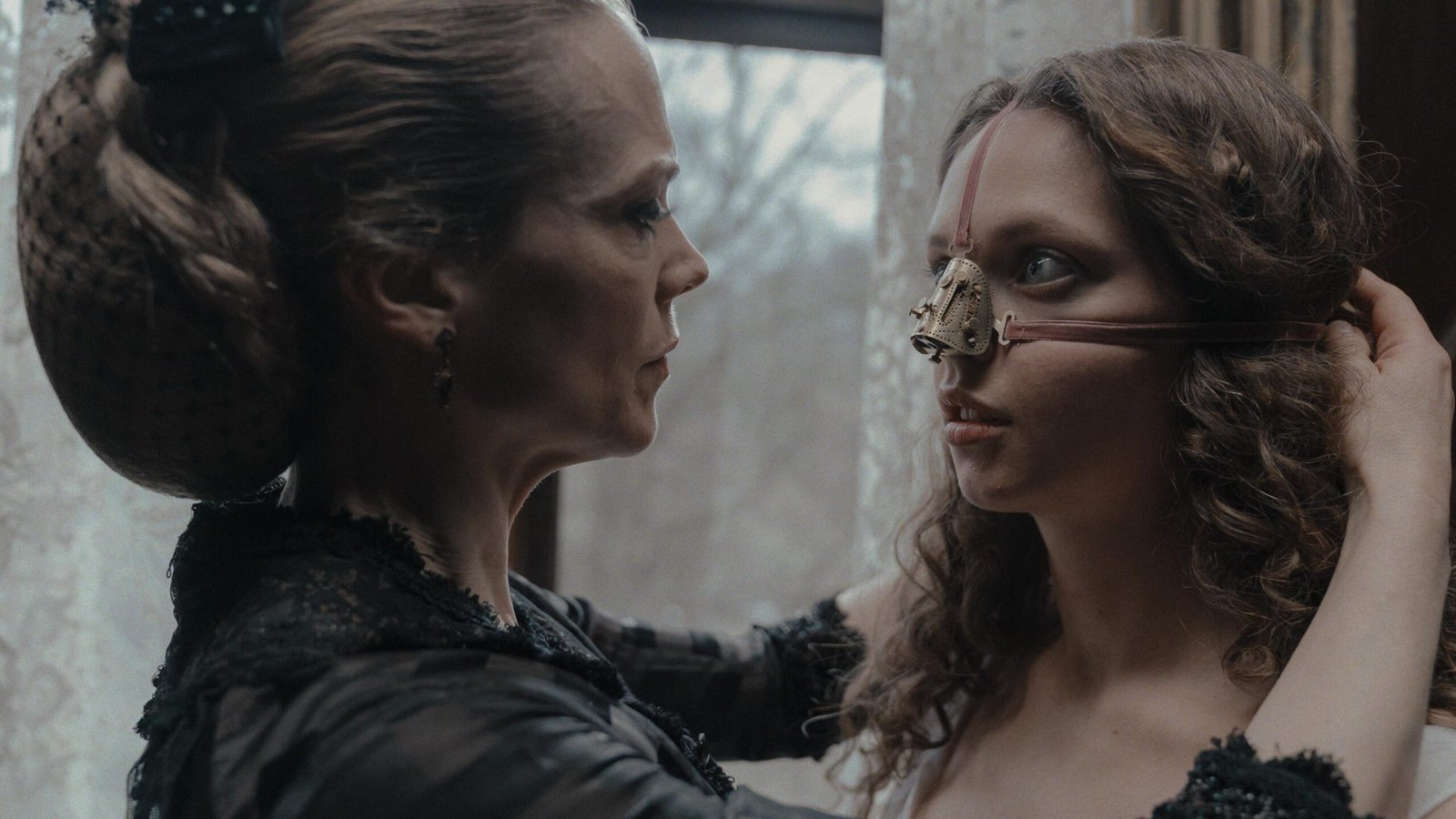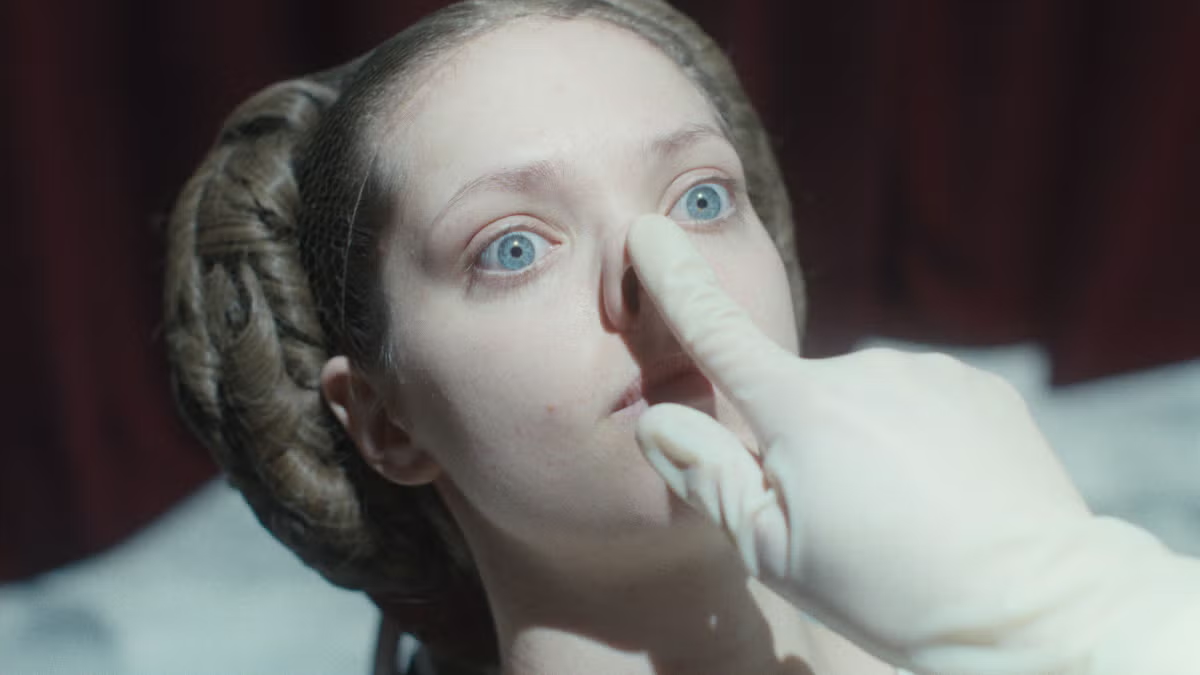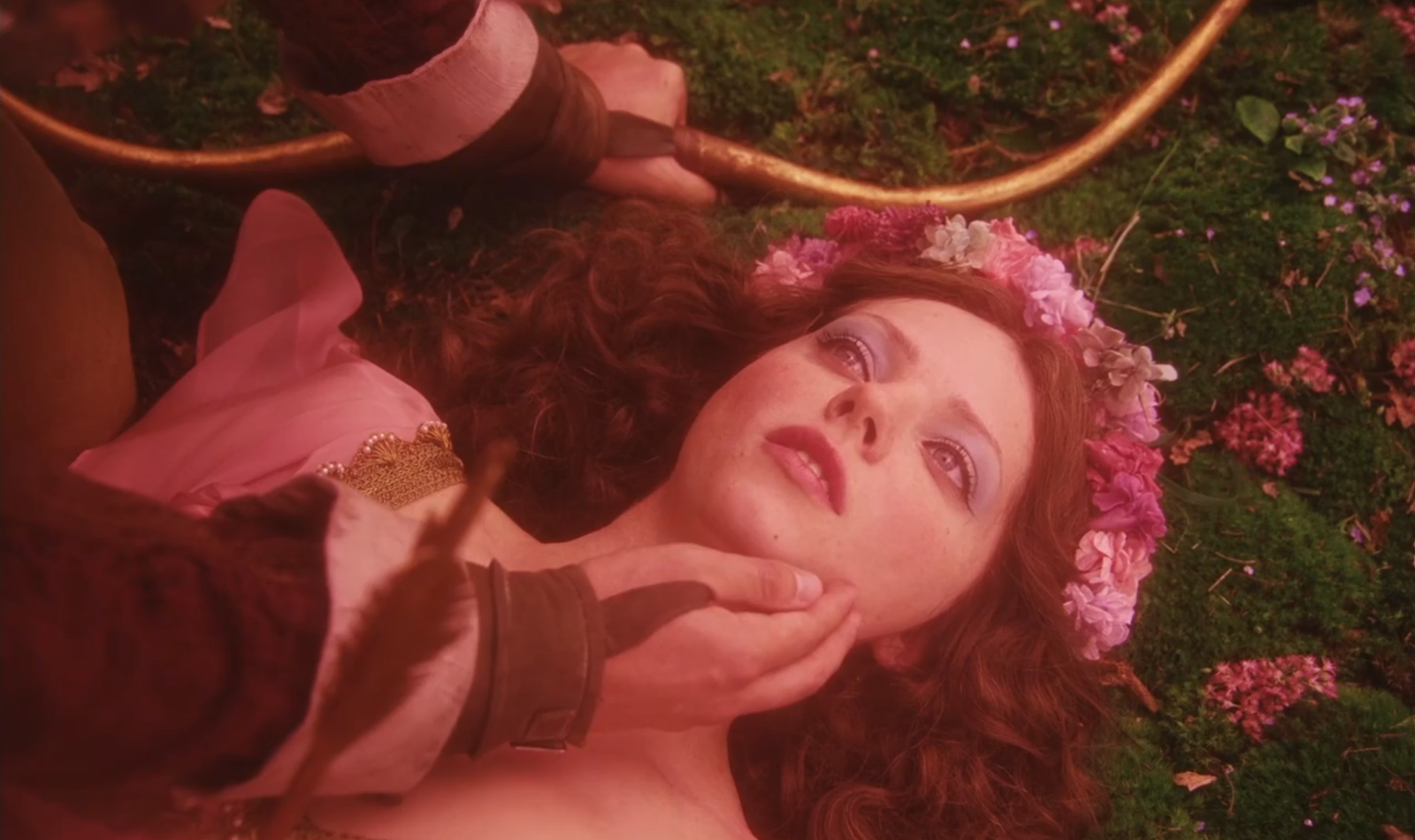Synopsis:
The film tells a story unfolding in an unnamed kingdom around a woman named Rebecca and her two daughters, Elvira and Alma. Elvira, the elder, is obsessed with the poetry of the handsome Prince Julian and dreams of marrying him. Rebecca marries a wealthy man for convenience—he too has a daughter, Agnes—and becomes her stepmother. But after the man’s sudden death, it turns out he wasn’t all that wealthy after all. When the prince announces a ball in search of a bride, rivalry spreads across the kingdom’s young women, and a full-blown feud erupts within the newly blended family. Agnes, the pretty one, is demoted to servant and forbidden from attending the ball, while Elvira, the “plain” one, is pushed through every possible means to become “the chosen one.”



Like many metamodern-era films, The Ugly Stepsister is a wild blend of genres—light drama to body horror—and, credit where due, the combination works and sticks in the memory. Though technically an adaptation of a fairytale about true love and a happy ending, the movie centers not on Cinderella but on one of the stepsisters, Elvira, who undergoes dark and disturbing procedures to alter her appearance. Cinderella—Agnes—is almost an antagonist here, with her desire to marry the prince reduced to a purely practical move to avoid sinking into poverty. It’s a relatable and historically grounded motivation, but it dims her character further given she’s actually in love with a stable boy and regularly sleeps with him in the stables. In the fairytale, Cinderella is radiant and pure and loves the prince; in the film, the only one who truly adores him and his poetry is the “ugly” stepsister—and it’s her who will make the biggest sacrifices.
The film dives deep into female sacrifice, but here the pressure doesn’t come from men—it’s other women pushing the protagonists to the edge. The adaptation choices are clever: at times the film veers away completely from the book, but then it’ll follow it with obsessive precision. For instance, in the original tale one of the sisters does in fact mutilating her feet to fit the slipper—and that scene hits hard in the film. As for the real shocker, we’ll stay quiet. Just know you’ll probably lose your appetite for a while.
Visually, the film relies on strong contrasts—soft velvety hues give an air of old-timey theatricality before veering into grotesque, gothic imagery of bodily horror. These abrupt shifts, combined with ritual-like depictions of physical transformation, leave a jarring collage-like impression—a mix of period drama and European arthouse, all drenched in brutal body horror and modern social commentary. The score deserves a mention too—modern, minimalist, and tightly synced with the film’s tone. It quietly reminds you: this isn’t a fairy tale adaptation, it’s a loose, present-day reinvention.


References:
The film is filled with an atmosphere of paradox and social absurdity, reminiscent of the work of Luis Buñuel and François Ozon. Its central theme — the fear of the body — clearly nods to the films of David Cronenberg, whose work deeply impressed the film’s director Emilie Blichfeldt. And while nowadays the exploration of female suffering in cinema has become something of a common ground, I think it’s still fair to name the greats as influencers — Ingmar Bergman as a deep explorer of female psychology, and Claude Chabrol as a master of slow-burning tension and a specialist in the “female gaze.”
Release:
With a $4.250.000 budget, the film has grossed around $900,000 worldwide for now. Despite limited release and its niche tone, it’s earned accolades at international festivals including Sundance and Berlinale, and received high praise from critics and audiences alike.
Currently streaming on Amazon,Shudder,AMC, Fandango,Philo, and Apple TV.


